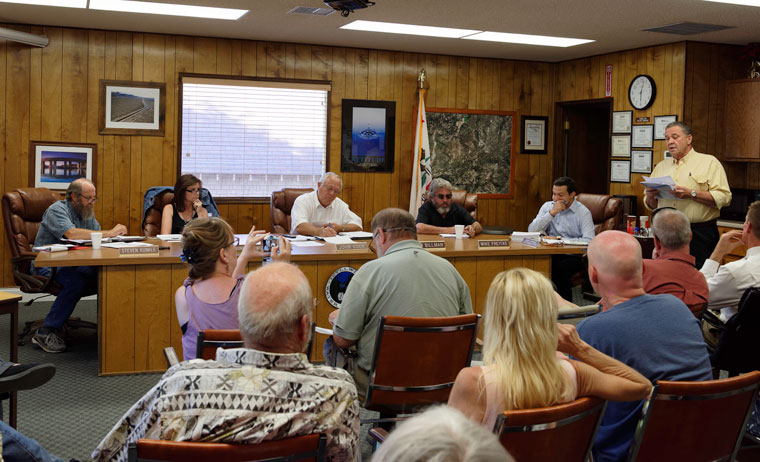Drought emergency declared statewide

Courtesy National Oceanic and Atmospheric Administration
The seemingly unending drought has engendered official action. On Friday, Jan. 17, Gov. Jerry Brown declared a State of Emergency and directed state officials to take all necessary actions to prepare for drought conditions.
“We can’t make it rain, but we can be much better prepared for the terrible consequences that California’s drought now threatens, including dramatically less water for our farms and communities and increased fires in both urban and rural areas,” said Brown. “I’ve declared this emergency and I’m calling all Californians to conserve water in every way possible.”
The Governor also directed state agencies to use less water and hire more firefighters and initiated a greatly expanded water conservation public awareness campaign.
Statewide water resources have been dramatically imperiled. Earlier this month, the Department of Water Resources reported that the first snow survey of 2014 found the current snowpack was only 20 percent of normal for January.

Photo by Doris Lombard
In addition to the sparse snowpack, many areas of California ended calendar year 2013 with the lowest rainfall amounts on record. Downtown Los Angeles, which since 1906 has averaged 14.74 inches of rain, ended the year with 3.4 inches, beating the previous low of 4.08 inches recorded in 1953.
While some northern California communities have already imposed rationing, the Hill water agencies are not affected in the same manner. Local water does not come from transfers from either the Colorado River or the Sacramento Delta area.
Weather forecasts offer little hope of the drought’s early demise. This month, the National Weather Service reported, “California is one area where, for time scales ranging from a few days to the full month of January, almost all indicators favor below-normal precipitation. Drought persistence and potential deterioration is forecast here with high confidence.”
Consequently, Cal Fire is warning firefighters about an “above-normal, large-fire potential in January along the coast” with a potential of “possibly returning to normal in February and March.”
The last measurable rainfall on the Hill was before Christmas. To date, the Forest Service has recorded 6.6 inches of rainfall at Keenwild Ranger Station. The normal rainfall through December is 9.2 inches and through January, it is 14.2 inches.
The three Hill water districts — Fern Valley, Idyllwild and Pine Cove — depend mostly on groundwater. While Fern Valley and Idyllwild do divert water from local creeks, only Idyllwild has declared a water emergency. IWD entered a Water Conservation Stage 2 in September.
Neither Fern Valley nor Pine Cove has declared a Stage 1, although both districts have been monitoring their groundwater resources.



